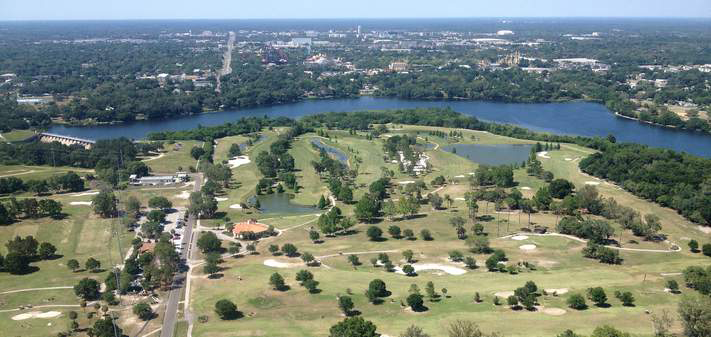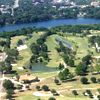
by Kevin Wiatrowski, Tribune staff, Published: May 20, 2013
TAMPA – City and state officials have taken the first steps toward a renovation of Rogers Park Golf Club that would reduce pollution washing into the Hillsborough River. The Tampa City Council agreed to put $100,000 toward changing the course’s drainage layout. The Southwest Florida Water Management District (SWFWMD) will put up $150,000.
“We’re just hoping to clean up the water before it discharges,” said Stephanie Powers, the project manager for SWFWMD. “Like any golf course, they use a lot of fertilizers.” Those fertilizers contain nitrogen, a potential plant food. When nitrogen washes off golf courses, streets, or even falls out of the air, it promotes the growth of algae in the water. That can make the river and the bay too cloudy to sustain sea grass beds, important nurseries for fish and other sea life.
“Nitrogen is the number one pollutant in Tampa Bay,” said Nanette O’Hara, public outreach coordinator for the St. Petersburg-based Tampa Bay Estuary Program. At the urging of O’Hara’s group, the city of Tampa last year enacted a ban on summer fertilizer use. That ban, which runs June 1 to Sept. 30, bans the sale and residential use of nitrogen-based fertilizer. The ban exempts golf courses, which have their own industry rules regarding fertilizer use they’re expected to follow, O’Hara said. Reducing the amount of nitrogen-laden water washing off Rogers Park Golf Course will help put a dent in the amount of nitrogen pollution the river picks up as it flows through the city, by far the most urbanized part of its sprawling watershed. “Any reduction is good,” Powers said.
The state Department of Environmental Protection has set limits on the amount of harmful bacteria the Hillsborough River can carry, but so far there are no limits on nitrogen. The river empties into Hillsborough Bay, an arm of Tampa Bay. For the past several summers, nitrogen has spiked at around 200 tons at the peak of each rainy season. Runoff from manmade surfaces makes up about 60 percent of the nitrogen pollution reaching Hillsborough Bay, according to the estuary program. Other divisions of Tampa Bay, such as Old Tampa Bay near Oldsmar and Middle Tampa Bay outside St. Petersburg, have 10 to 30 percent less nitrogen pollution than Hillsborough Bay, according to estuary program figures. As the city and state try to reduce runoff from Rogers Park Golf Course, they have to contend with the course’s underlying topography, which goes back to when the land was a city park. It became a golf course in 1952. A network of drainage ditches and water hazards channels runoff to two points where it flows into the Hillsborough River. Slowing that water down will help soak up the polluted water and give plants a chance to absorb the nitrogen, Powers said.
The exact plan will be in place by late 2014, Powers said. SWFWMD and the city hope to hire a company to do the work by October of this year. Renovations could begin in 2015. Powers said one goal of the renovation will be to replace exotic plants, Brazilian pepper chief among them, with native vegetation that will use less irrigation water.

